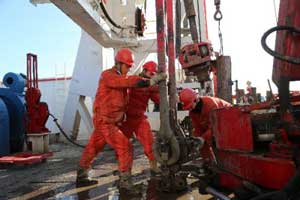Study on detection of oilfield chemical additives
1. Research status of oilfield chemical additives detection
At present, there is a certain gap between China and other developed countries in oilfield chemicals and its application technology. But the gap is not big. The exploration and development of complex oil and gas at home and abroad need new oilfield chemicals. “Revolutionary” and “breakthrough” oilfield chemical additives can easily solve the technical problems in oil and gas exploration and development. This can promote the development of complex oil and gas exploration and development technology. However, the research and development of oilfield chemical additives in China is far from meeting this demand.
There are many kinds of oilfield chemicals. Such as drilling fluid, completion fluid; primary oil recovery, secondary oil recovery, tertiary oil recovery; gathering and transportation, water treatment, pipeline corrosion protection, etc. These oilfield chemicals have different research methods. And most of them belong to different professional personnel in petroleum engineering. There are many varieties in our country, and they appear constantly, but it is difficult to make a big breakthrough. A large number of chemical and chemical research forces have entered the field of oilfield chemicals. This has become an important force in the research of oilfield chemicals. It has improved the research and development of oilfield chemicals. So far, it has not made a major development and breakthrough.
2. Discussion on detection and research methods of oilfield chemical additives
The research of oilfield chemicals can not meet the urgent needs of petroleum exploration and development. The combination of oilfield application engineering and chemistry is not good. As a result, the mechanism and performance requirements of various oilfield chemicals and their relationship with the molecular structure of oilfield chemicals are not clear. Chemical agents that make us not know what molecular structure should be studied. This belongs to the theoretical problem of oilfield applied chemistry. (lack of theoretical basis for research and development) the development of Applied Chemistry Theory in Oilfield must absorb and comprehensively apply the knowledge of other disciplines and the latest progress of related technologies.
3. Application of oilfield chemical additives
In the oil field, scaling, erosion and adhesion often occur. The chemical additives used to deal with these water quality and water stability problems mainly include scale inhibitor, oil displacement agent, flocculant, bactericide, demulsifier, wax inhibitor and corrosion inhibitor. And these chemical additives have good compatibility and coordination in the process of comprehensive use.
In the compounding system of oilfield auxiliaries, the compatibility tests of various additives are often carried out according to their performance and actual needs. For the scaling problem, it is mainly due to the formation damage caused by water injection, which can easily affect the performance of oil production wells and the development effect of oilfield. The compatibility test is mainly related to injection water and formation water. At the same time, it is necessary to predict the scaling trend to compare the experimental results and analyze the scaling stability index and solubility of the related scaling substances. So as to prevent the structural problems of oil reservoir.
The application of oilfield chemical additives is mainly to reduce the viscosity of the reservoir and strengthen the reservoir liquidity. In order to improve oil recovery. The main mechanism is to optimize the molecular deposition film agent and polymer compatibility test. Then the stability test (water stability, thermal stability, etc.) of the selected compound system was carried out. Finally, physical simulation experiment was used to test the test effect. Flocculants are mainly divided into organic, inorganic and composite types. It is necessary to measure its performance before compatibility test to facilitate the performance evaluation after compatibility. It is often compatible with scale inhibitor, demulsifier, wax inhibitor and corrosion inhibitor.






